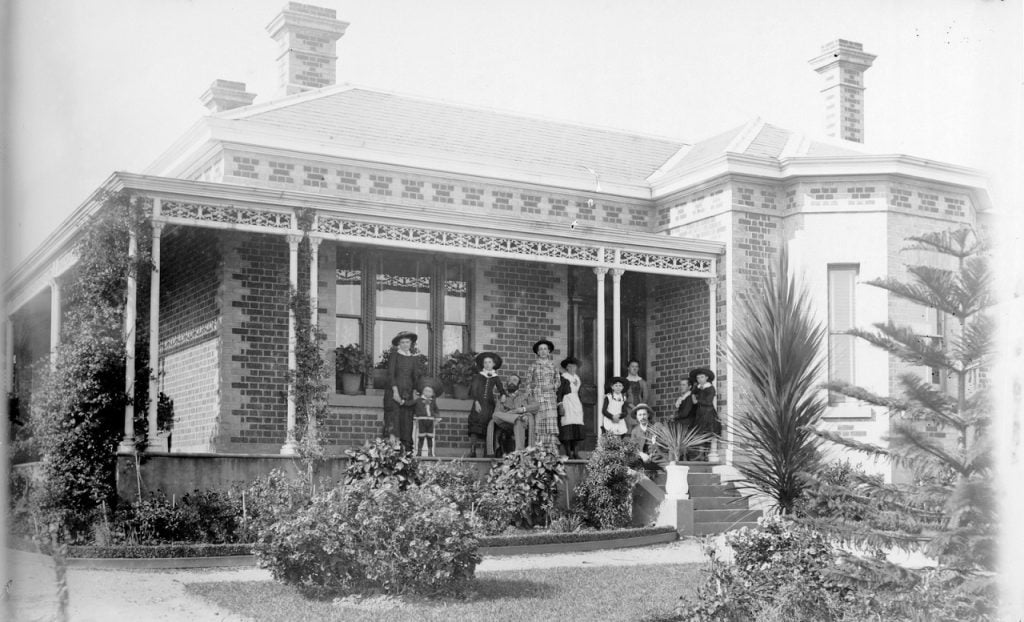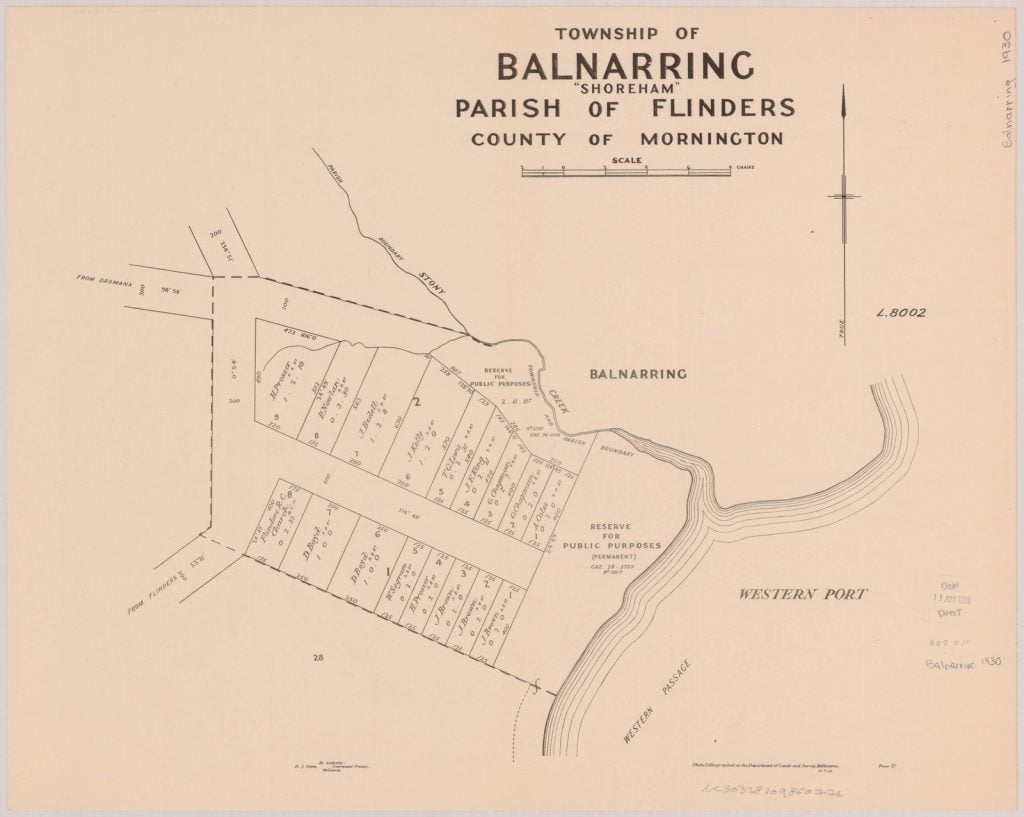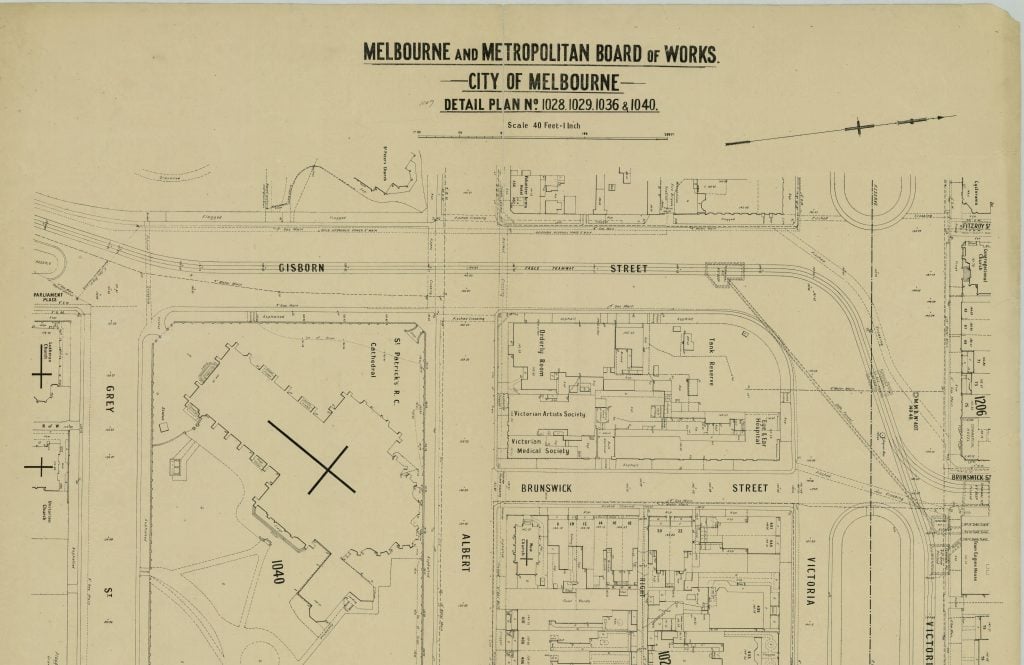Are you interested in the history of your home? Or would you like to discover more about the home your ancestor lived in?
Unless it’s a well-known property, it’s unlikely you will find a detailed published history but there are ways to find information about your house and the occupants who lived in it.
In today’s blog, we will look at what resources can be used to research the history of a property.

Who lived there?
Occupancy and ownership make up an important part of your house’s history and it can be interesting to discover who lived in your house before you. Let’s look at what resources you can use to trace the history of occupants and owners.
Land title
A land title records details of the property and ownership. They are a fantastic resource for property research! From the Landata website you can purchase a Title history search statement. This document lists the history of title ownership – including the names of previous owners.
The Public Record Office Victoria also provide access to the Land Titles Index which can be used to trace a title’s history. This database is only available onsite in their North Melbourne Reading Room and you need to already know the volume and folio number of the title to search it. You can find the volume and folio number listed on your current title document or purchase this information from Landata.
Township, parish and county plans
Township, parish and county plans record information about the transfer of land from the crown to private ownership or leasehold. These plans only record the first transfer and not subsequent owners.

The State Library holds a great collection of parish and townships plans, many of which are digitised for immediate viewing. A search of the Library’s online catalogue for the name of the parish together with the keywords real property parish will bring up relevant records.

The name of the parish is not always the name of the town or suburb. To identify the parish or township, search for the name of the suburb or town in the online Township and parish guide. Or view the online Map of Victoria showing parishes.
The Public Record Office Victoria also holds a fantastic collection of township, parish and county plans. It’s worth exploring their Mapwarper website too, as it allows you to overlay historical maps on a current map of today. A nifty tool to play around with!
Post office directories
Historical post office directories were the White pages of their time and of these directories, Sands & McDougall Melbourne and Victorian directories are the most popular. They ran from 1857-1974 and include an alphabetical listing of people (only the main householder is listed, and this tended to be a male member of the house), a street-by-street listing (where you can look up a street address and see who the occupier is) and a trade and professional listing.
In the example below, we’ve searched for Barkly Street in Oakleigh in the 1935 Sands & McDougall directory. You can see a list of occupants for each address in Barkly Street.

By searching through multiple years of these directories, you can start to build up a list of past occupants.
The State Library holds a full collection of Sands & McDougall Melbourne and Victorian directories on microfiche in our Newspapers & Family History Reading Room. Every 5 years of this directory has been digitised and can be accessed through the Library’s website.
Rate books – owner/occupier
Rate books can list valuable information on a property, such as:
- Name and occupation of the owner
- Name and occupation of the occupier
- Address or street name
- Description of the property (i.e. 3-bedroom brick house)
- Rate amounts
Information may vary, depending on the council area. The State Library holds a small collection of rate books, covering areas such as the City of Melbourne, Warrnambool and Malvern. A more comprehensive collection is held at the Public Record Office Victoria. The Ancestry website have also digitised a selection of rate books from a variety of council areas (see list below). You can access Ancestry Library Edition for free in the State Library building.
| Victoria, Australia, Rate Books, 1855-1963 – available on Ancestry Library Edition | |
| Borough of Creswick, 1864-1933 Borough of Sebastopol, 1906-1938 Borough of Stawell, 1870-1920 City of Brighton, 1861-1900 City of Broadmeadows, 1863-1899 City of Caulfield, 1857-1955 City of Coburg, 1863-1900 City of Collingwood, 1864-1900 City of Fitzroy, 1858-1900 City of Footscray, 1864-1900 City of Hawthorn, 1868-1901 City of Kew, 1862-1899 Separate collections on Ancestry: Camberwell and Waverley, Rate Books, 1857-1927 Victoria, Australia, Land Registers, 1863-1962 – includes rate records for the Kerang and Swan Hill shires. | City of Malvern, 1856-1933 City of Moorabbin, 1862-1900 City of North Melbourne, 1894 City of Northcote, 1883-1901 City of Port Melbourne, 1860-1901 City of Prahran, 1856-1900 City of South Melbourne, 1855-1900 City of St Kilda, 1859-1900 City of Williamstown, 1858-1902 Shire of Creswick, 1869-1938 Shire of Stawell, 1861-1949 Shire of Waranga, 1863-1960 Shire of Wimmera, District of Horsham,1863-1940 |
Researching the property
In addition to the resources listed above, the following resources can be used to find further information on your property or house.
Melbourne and Metropolitan Board of Works (MMBW) plans
Melbourne and Metropolitan Board of Works (MMBW) plans, are historical plans of Melbourne produced from the 1890s – 1950s to help design the sewerage system. These plans include details such as boundaries, the size of the property, outline of buildings (houses, sheds…etc) and the garden layout of bigger estates.

Excerpt from Melbourne and Metropolitan Board of Works detail plan, 1028, 1029, 1036 & 1040, City of Melbourne [cartographic material]. 1899.
Occasionally you will even find the name of the house listed, as shown in the example below.
![Melbourne and Metropolitan Board of Works detail plan.no. 1979, Camberwell [cartographic material]. (1907). Melbourne: MMBW.](https://blogs.slv.vic.gov.au/wp-content/uploads/2023/08/mmbw-camberwell-1024x782.jpg)
You can find more information on the MMBW plans, including how to access them on the Library’s online MMBW research guide.
Newspapers
Newspapers can also be a useful resource. Try searching for the property’s address in Trove’s digisited newspaper database. You may find real estate listings, reports on social occasions, crimes, fires or other newsworthy events which occurred at the house. Architecturally designed houses or buildings may even be reported on. Registered Victorian Library members can also access historical issues of The Age newspaper (1854-2000) from home through the Australian Newspaper Collection (Proquest) database. You will be prompted to log in with your Library membership number and password if searching from home.
Pictures and architectural drawings
The State Library holds an extensive pictures collection (drawings, paintings, photographs etc.) from the mid 19th century to the present day.
Try searching the Library’s online catalogue for the street or suburb of the property. You might discover early photographs of your street or town. If you’re lucky you may even find a picture of your house!
The Library also holds a rich collection of architectural drawings. These are arranged by architect, so you do need to know the name of the architect to find them. For most houses, an architectural drawing will not be available but if your house was designed by a well known architect, those plans may have survived. Try searching for the name of the architect in the Library’s online catalogue.
You can find more information about the Library’s architectural plans collection, including tips on searching in the Researching buildings and houses research guide.
![Buildings to be erected at East Melbourne for Goldberg Esq / Pitt, William 1855-1918 [1881?]](https://blogs.slv.vic.gov.au/wp-content/uploads/2023/08/Buildings-to-be-erected-at-East-Melbourne-for-Goldberg-Esq-1024x419.jpg)
Auction plans
Auction plans are also fascinating to view. They can show divisions of land, descriptions of properties (sometimes with exaggerated claims), land measurements, street numbers and auction dates. The Library holds many auction plans including the Vale, Batten & Percy and Houghton collections. To find auction plans on our catalogue, limit your search by selecting Maps from the dropdown menu. Then search for the names of two cross streets plus the words auctions victoria.

Local councils
The information recorded by councils can vary, but the records kept can be a useful source of information. Records can include historical building plans and permits or conservation and heritage studies reports, which can help date the age of the house.
We recommend that you check with the relevant council to see what records they hold. For example, the Whitehorse City Council has digitised historical aerial photographs of the City of Whitehorse for a selection of years between 1945 –2022. If your property is in the Whitehorse area you will have access to an aerial view of your property for the years available. You can spot changes in buildings, gardens and property lines. It’s a fascinating way to view the changes to your property over time.
Heritage listings
If your house is heritage listed, there may already be information written about the property. Try searching the Victorian Heritage Database for the street address of the property. Unfortunately, the heritage overlays of only some council areas are included in this database.
What type of house is it?
The following online resources can help you work out the style of your house. They are fascinating to look through and can help you understand what house styles were available at different times.
- What house is that a guide to Victoria’s housing styles (Heritage Council Victoria)
- State Savings Bank design books
- Pamphlet of useful information for persons wishing to either build, borrow, or invest 1883
Want more?
Looking for more information or guidance? Try our online research guides and blogs (listed below) or contact us through our Ask-a-librarian service.
- Researching buildings and houses
- Maps for local and family history
- How to read the MMBW 40ft to the inch detail plans
- Online collection spotlight: Batten and Percy Auction Plans
- Researching your Victorian ancestors (use these resources to find out more about the people who lived in your home).


Local historical societies hold a wealth of information also .
Great tip, thank you!